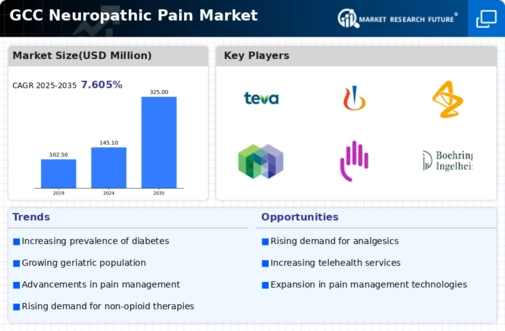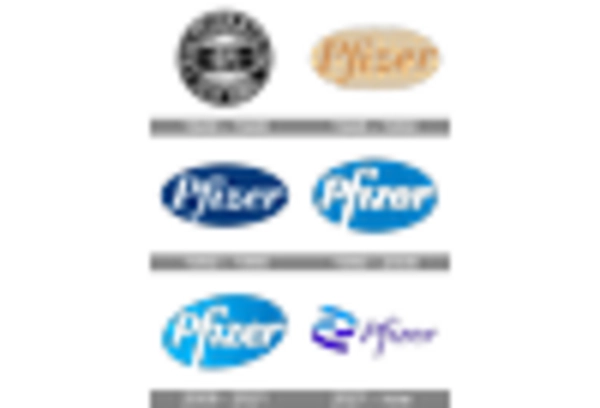Rising Healthcare Expenditure in the GCC
The increase in healthcare expenditure across the GCC countries is a significant driver for the neuropathic pain market. Governments are investing heavily in healthcare infrastructure and services, which includes the development of specialized pain management clinics. This investment is crucial as it facilitates access to advanced treatment options for patients suffering from neuropathic pain. Reports indicate that healthcare spending in the GCC is projected to reach $104 billion by 2025, reflecting a commitment to improving health outcomes. As healthcare systems evolve, the neuropathic pain market is likely to benefit from enhanced service delivery and a wider array of treatment options.
Regulatory Support for New Drug Approvals
Regulatory bodies in the GCC are increasingly supportive of new drug approvals for neuropathic pain management. This trend is evident as agencies streamline the approval process for innovative therapies, thereby encouraging pharmaceutical companies to invest in research and development. The expedited review processes and favorable regulatory frameworks are likely to enhance the availability of new treatment options in the neuropathic pain market. As a result, patients will have access to a broader range of effective therapies, which could lead to improved pain management outcomes. This supportive regulatory environment is expected to stimulate market growth, fostering innovation and competition among manufacturers.
Advancements in Pain Management Technologies
Technological advancements are playing a crucial role in shaping the neuropathic pain market. Innovations such as neuromodulation devices, wearable pain management systems, and telemedicine solutions are gaining traction in the GCC. These technologies not only enhance patient outcomes but also improve accessibility to pain management services. For instance, the introduction of remote monitoring tools allows healthcare professionals to track patient progress in real-time, leading to more personalized treatment plans. The market for these technologies is projected to grow significantly, with estimates suggesting a compound annual growth rate (CAGR) of over 10% in the coming years. This trend indicates a shift towards more integrated and technology-driven approaches in managing neuropathic pain.
Increasing Prevalence of Neuropathic Disorders
The rising incidence of neuropathic disorders in the GCC region is a primary driver for the neuropathic pain market. Conditions such as diabetic neuropathy and post-herpetic neuralgia are becoming more common, largely due to lifestyle changes and an aging population. According to health statistics, the prevalence of diabetes in the GCC is estimated to be around 16.3%, which significantly contributes to the rise in neuropathic pain cases. This growing patient population necessitates effective pain management solutions, thereby propelling the demand for innovative therapies and medications within the neuropathic pain market. As healthcare providers seek to address this increasing burden, the market is likely to expand, with a focus on developing targeted treatments that cater to the specific needs of these patients.
Growing Awareness and Education on Pain Management
There is a notable increase in awareness and education regarding neuropathic pain management in the GCC. Healthcare professionals are increasingly recognizing the complexities of neuropathic pain, leading to improved diagnostic and treatment protocols. Educational initiatives aimed at both healthcare providers and patients are being implemented, which helps in demystifying neuropathic pain and its management. This heightened awareness is likely to drive the neuropathic pain market as more patients seek treatment options. Furthermore, as healthcare systems prioritize pain management, the demand for effective therapies is expected to rise, potentially leading to a more robust market landscape.

















Leave a Comment